
views
X
Research source
Preparing for Insertion

Explain the process to the patient before beginning. Most patients are not used to inserting any object, let alone a long tube, into their urethra. Though this isn't always described as "painful," it is often described as "uncomfortable," even intensely so. Out of respect for the patient, explain the steps of the procedure to him or her before beginning. Explaining the steps and what to expect can also help the patient relax and avoid anxiety.

Ask the patient to lie on on their back. The patient's legs should be spread and their feet should be together. Lying in a supine position relaxes the bladder and urethra, facilitating easier catheter insertion. A tense urethra compresses the catheter, which results in resistance during insertion, causing pain and sometimes even damage to the underlying tissue of the urethra. In severe cases, this may cause bleeding. Assist the patient in getting into the supine position if necessary.

Wash your hands and put on sterile gloves. Gloves are an important part of the PPE (Personal Protective Equipment) health care workers use to protect themselves and the patient during medical procedures. In the case of catheter insertion, sterile gloves help ensure that bacteria are not introduced into the urethra and that the patient's bodily fluids do not come into contact with your hands.

Open the catheter assembly. Single-use catheters come in sealed, sterile kits. Before opening the kit, ensure you have the correct catheter for your purposes. You will need a catheter that is the correct size for your patient. Catheters are rated for size in units called French (1 French = 1/3 mm) and are available in sizes from 12 (small) to 48 (large) French. Smaller catheters are usually better for the patient's comfort, but larger catheters may be necessary to drain thick urine or to ensure the catheter stays in place. Some catheters also have specialized tips that allow them to serve different functions. For instance, a type of catheter called a Foley catheter is usually used for draining urine because it includes a balloon attachment which can be inflated to secure the catheter behind the bladder neck. Gather medical-grade disinfectant, cotton swabs, surgical drapes, lubricant, water, tubing, a drainage bag, and tape. All items should be properly cleaned and/or sterilized.
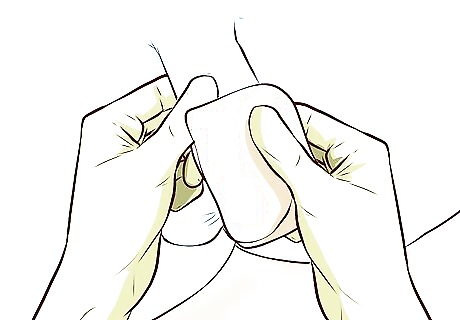
Sterilize and prepare the patient's genital area. Scrub the patient's genital area with disinfectant-soaked cotton swabs. Rinse or scrub the area with sterile water or alcohol to remove any debris. Repeat as needed. When finished, lay down surgical drapes around the genitals, leaving a space for access to the penis or vagina. For female patients, be sure to clean the labia and urethral meatus (the outside of the opening of the urethra located above the vagina). For men, clean the urethral opening on the penis. Cleaning should be done from inside to outside so as not to contaminate the urethra. In other words, start at the urethral opening and gently work your way outward in a circular fashion.
Inserting the Catheter into the Bladder
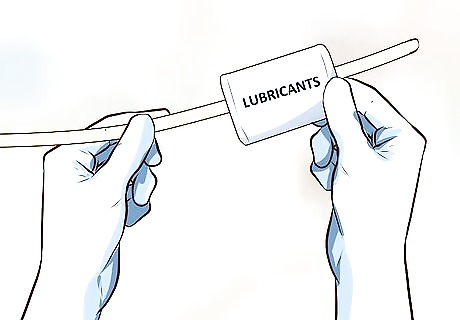
Apply lubricant to the tip of the catheter. Coat the distal portion of the catheter (the 0.78-1.97 in (2-5 cm) portion at the tip) with a generous amount of lubricant. This is the end you will insert into the urethral opening. If using a balloon catheter, be sure to lubricate the balloon portion at the tip as well.
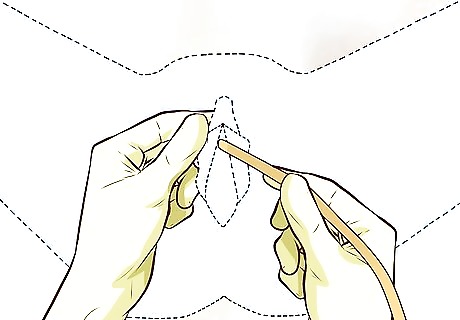
If the patient is female, hold the labia open and insert the catheter into the urethral meatus. Hold the catheter in your dominant hand and use your non-dominant hand to spread the patient's labia so that you are able to see the urethral opening. Gently insert the tip of the catheter into the urethra.
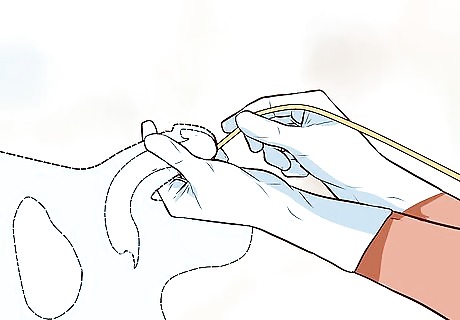
If the patient is male, hold the penis and insert the catheter into the urethral opening. Hold the penis in your non-dominant hand and gently pull upward, perpendicular to the patient's body. Insert the tip of the catheter into the patient's urethra with your dominant hand.
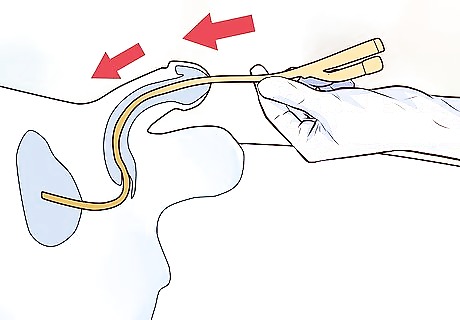
Continue pushing until the catheter sits in the bladder. The length of the catheter should be gently fed through the urethra and into the bladder until urine is observed. After urine begins to flow, continue to push the catheter into the bladder another 2 inches (5.08 cm) to make sure the catheter is against the neck of the bladder.
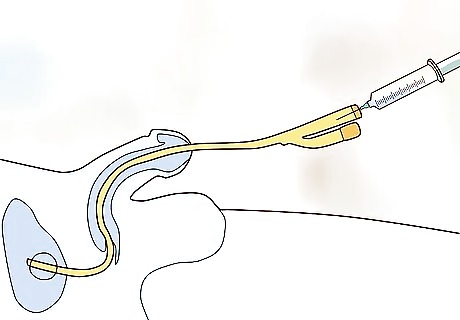
If using a balloon catheter, inflate the balloon with sterile water. Use a water-filled syringe to inflate the balloon via sterile tubing connected to the catheter. The inflated balloon serves as an anchor so as not to displace the catheter when moving. Once inflated, pull gently on the catheter to ensure the balloon is seated snugly against the neck of the bladder. The amount of sterile water you use to inflate the balloon depends on the size of the balloon on the catheter. Usually, about 10 cc of water is required, but check the size of your balloon to be sure.
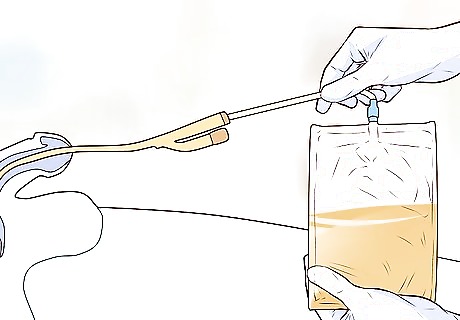
Connect the catheter to the drainage bag. Use sterile medical tubing to allow urine to drain into a drainage bag. Secure the catheter to the patient's thigh or abdomen with tape. Make sure you place the drainage bag lower than the patient's bladder. Catheters work via gravity - urine cannot drain "uphill." In a medical environment, catheters can be left in for as long as 12 weeks before being changed, though they are often removed much earlier. Some catheters, such as a straight or intermittent catheter, for instance, are removed immediately after urine stops flowing.













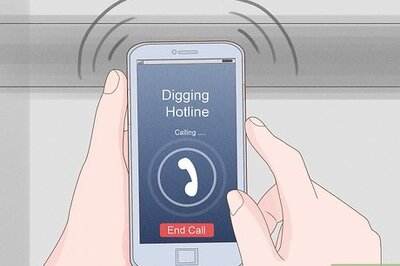



Comments
0 comment